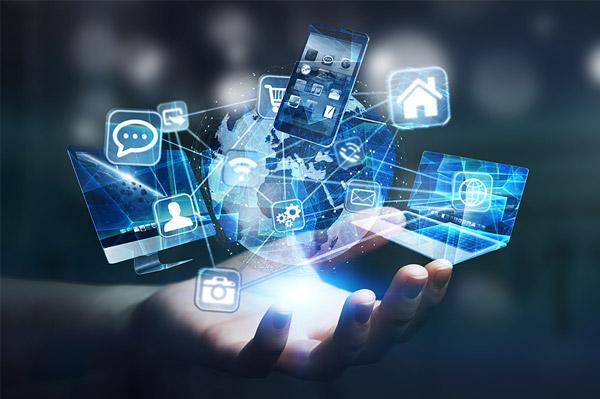In a world increasingly defined by resource scarcity and environmental urgency, the circular economy emerges as a promising blueprint for sustainable growth-one that rethinks waste, energy, and materials as part of a continuous, regenerative cycle. At the heart of this transformation lies digital technology, a powerful enabler capable of weaving efficiency, transparency, and innovation into each stage of the economic loop. From smart sensors that track product lifecycles to blockchain systems ensuring supply chain accountability, digital tools are reshaping how industries design, use, and reclaim resources. This article explores the multifaceted ways digital technologies can bolster the circular economy, turning ambitious ideals into practical, scalable solutions.
Emerging Digital Tools Enabling Resource Efficiency in Circular Systems
Advancements in digital platforms are revolutionizing how materials flow within circular systems, promoting unprecedented resource efficiency. Tools leveraging real-time data analytics and the Internet of Things (IoT) enable stakeholders to track products from cradle to cradle with precision. This enhanced visibility optimizes the recovery and reuse of components, diminishing waste and lowering environmental impact. For instance, smart sensors embedded in manufacturing equipment can predict maintenance needs, extending the lifespan of machinery and minimizing downtime. By integrating these data-driven insights, companies can fine-tune production cycles for sustainability while reducing operational costs.
Meanwhile, emerging technologies are fostering collaboration and transparency across supply chains, facilitating closed-loop models. Key enablers include:
- Blockchain networks, ensuring tamper-proof documentation of material provenance and facilitating circular transactions.
- Artificial intelligence, which optimizes sorting and remanufacturing processes through image recognition and pattern analysis.
- Digital twin simulations that model entire product lifecycles, pinpointing opportunities for design improvements and resource conservation.
| Digital Tool | Primary Function | Resource Efficiency Benefit |
|---|---|---|
| IoT Sensors | Real-time condition monitoring | Extended product life, reduced waste |
| Blockchain | Secure material traceability | Improved circular supply chain trust |
| AI Sorting Systems | Automated material identification | Higher recycling accuracy |
Harnessing IoT and AI for Enhanced Product Lifecycle Management
Integration of Internet of Things (IoT) and Artificial Intelligence (AI) is revolutionizing how businesses manage entire product lifecycles with precision and foresight. IoT devices embedded across products and supply chains continuously capture real-time data-from operational conditions to consumer usage patterns. When this vast data pool is analyzed using AI algorithms, companies gain predictive insights that enable proactive maintenance, optimize resource utilization, and minimize waste. This fusion fosters a smarter, more resilient approach that aligns seamlessly with circular economy principles, helping products stay in use longer while reducing environmental footprints.
Key benefits unlocked by these technologies include:
- Optimized resource recovery: AI-driven analytics can identify the best moments for product refurbishment or recycling, enhancing material reuse.
- Dynamic supply chain adaptation: IoT sensors monitor product wear in real time, allowing manufacturers to adjust production based on demand and product lifespan.
- Enhanced product design: Feedback loops created through connected products inform design improvements focused on sustainability and end-of-life considerations.
| Technology | Contribution | Impact on Circularity |
|---|---|---|
| IoT Sensors | Real-time product data collection | Extends product life by enabling predictive maintenance |
| AI Algorithms | Advanced data analytics and forecasting | Optimizes resource use and end-of-life decisions |
| Cloud Platforms | Centralized data integration | Improves transparency and collaboration across stakeholders |
Strategies for Integrating Digital Platforms to Foster Sustainable Consumption
“`html
Digital platforms act as the cornerstone for transforming consumer behaviors towards eco-friendly practices. By harnessing the power of real-time data and personalized user experiences, these platforms empower individuals to make informed choices that prioritize sustainability. Features such as product lifecycle tracking, transparent sourcing information, and community-driven reviews encourage users to opt for products designed for durability, repairability, and recyclability. Integrating these functionalities into everyday digital interactions fosters a culture where consumption is aligned with environmental values, effectively closing the loop in product lifecycles.
Collaboration between stakeholders is crucial for maximizing impact. Digital ecosystems can facilitate seamless connections between manufacturers, retailers, and consumers by supporting:
- Marketplace platforms promoting second-hand goods and refurbished items
- Subscription models that encourage reuse and reduce waste
- Incentive programs rewarding users for recycling and sustainable purchases
- Shared resource networks enabling community access to tools and materials
| Platform Type | Sustainability Focus | Key Benefit | ||
|---|---|---|---|---|
| Circular Marketplace | Resale & refurbishment | Extends product lifespan | ||
| Sharing Economy Apps | Resource sharing | Reduces individual consumption | ||
| Incentive Platforms | Recycling rewards | Incentive Platforms | Recycling rewards | Encourages sustainable behavior |
| Platform Type | Sustainability Focus | Key Benefit |
|---|---|---|
| Circular Marketplace | Resale & refurbishment | Extends product lifespan |
| Sharing Economy Apps | Resource sharing | Reduces individual consumption |
| Incentive Platforms | Recycling rewards | Encourages sustainable behavior |
Additional improvements you may consider:
- Accessibility: Add
- CSS Separation
Key Takeaways
As the world pivots toward sustainability, digital technologies emerge not just as tools but as catalysts for reimagining how resources flow within our economy. By enabling smarter tracking, enhancing transparency, and fostering collaboration, these innovations pave the way for a truly circular future-one where waste is minimized, value is preserved, and systems are designed to regenerate. Embracing digital solutions is no longer a choice but a necessity if we are to close the loop and build resilient economies that thrive in harmony with the planet. In this evolving landscape, technology and circularity are not just partners-they are the blueprint for tomorrow’s sustainable progress.
